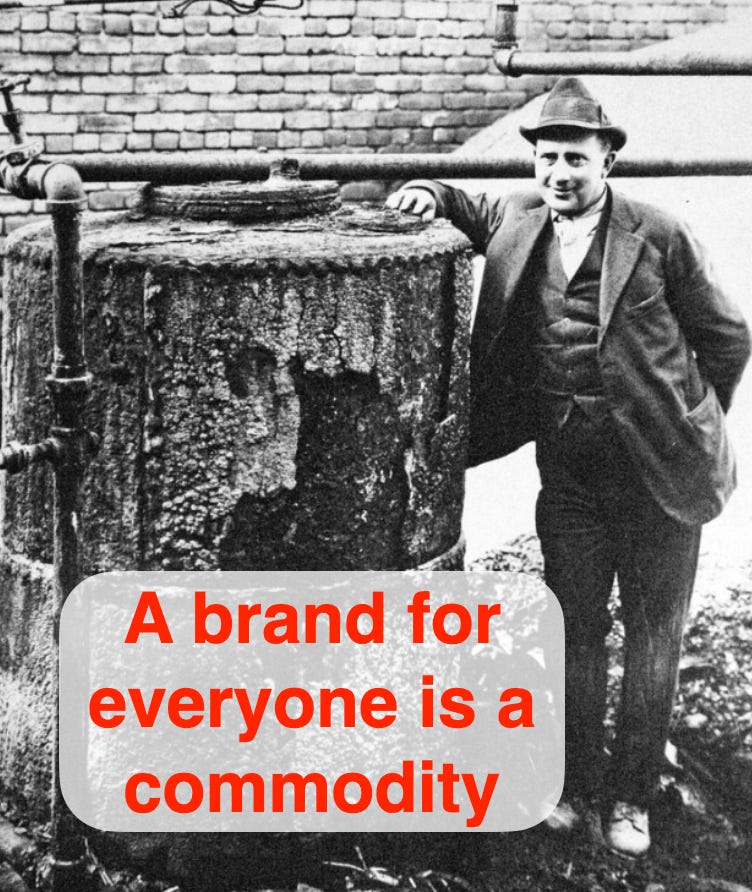A Beverage Brand Without a USP is Just a Commodity
Don't confuse sales with strategy
You can have product-market fit without a unique selling proposition (USP). Just because people are buying your product doesn’t necessarily mean your brand has a USP.
𝗘𝘅𝗮𝗺𝗽𝗹𝗲𝘀 𝗼𝗳 𝗕𝗲𝘃𝗲𝗿𝗮𝗴𝗲𝘀 𝗪𝗶𝘁𝗵𝗼𝘂𝘁 𝗮 𝗖𝗹𝗲𝗮𝗿 𝗨𝗦𝗣
🥤 Generic, Functional Sodas: We’re now awash in “better for you,” so differentiation requires something more.
💧 Copycat Water Brands: You can’t out-Liquid Death, Liquid Death.
🥃 “Local” Craft Spirits: USPs need to be able to travel beyond their own backyard.
☕ Small-Batch Coffee Roasters: In 2010, being “ethically sourced” might have set a brand apart, but now it’s table stakes.
𝗪𝗵𝘆 𝗜𝘁 𝗠𝗮𝘁𝘁𝗲𝗿𝘀 💡
A clear USP is what differentiates your brand from the competition and gives customers a reason to choose you. Without it, your product can become a commodity, and you risk losing to a competitor who develops a stronger brand story or a clearer value proposition.
𝗧𝗵𝗲 𝗖𝗼𝗻𝘁𝗲𝘅𝘁 🖼️
Product-Market Fit: This means you’ve built a product that people want and are willing to pay for. This is the first critical step for any startup.
Unique Selling Proposition (USP): This is the specific benefit that makes your product or service better than your competitors. It’s the core message that explains why a customer should buy from you and not someone else.
𝗚𝗼 𝗗𝗲𝗲𝗽𝗲𝗿 🧠
Don’t confuse product-market fit with a USP. You might have a great product that solves a problem, and a lot of people might be buying it. But if you don’t have a clear USP, you’re vulnerable, especially in a crowded market.
To find your USP, you have to ask yourself:

